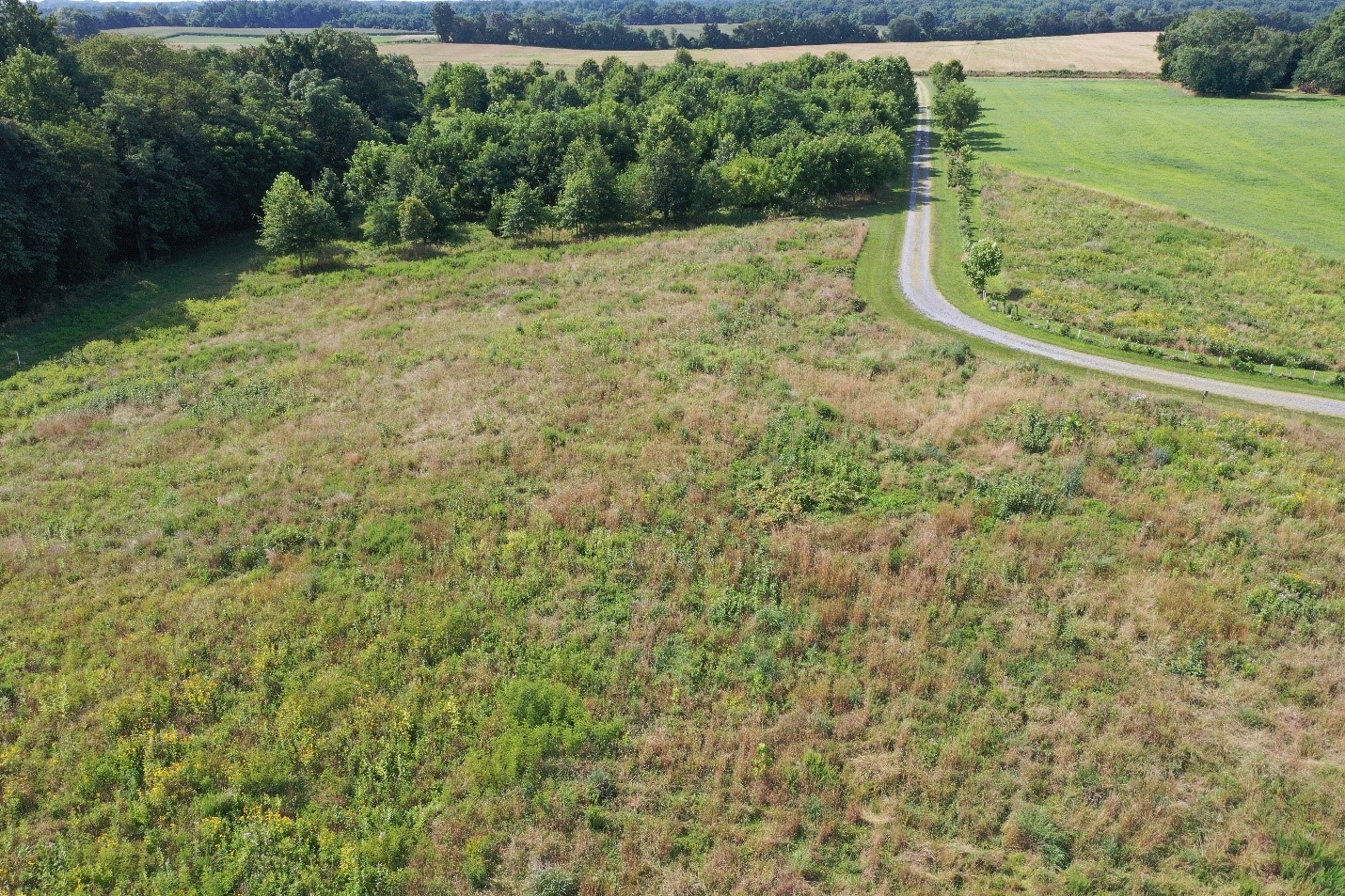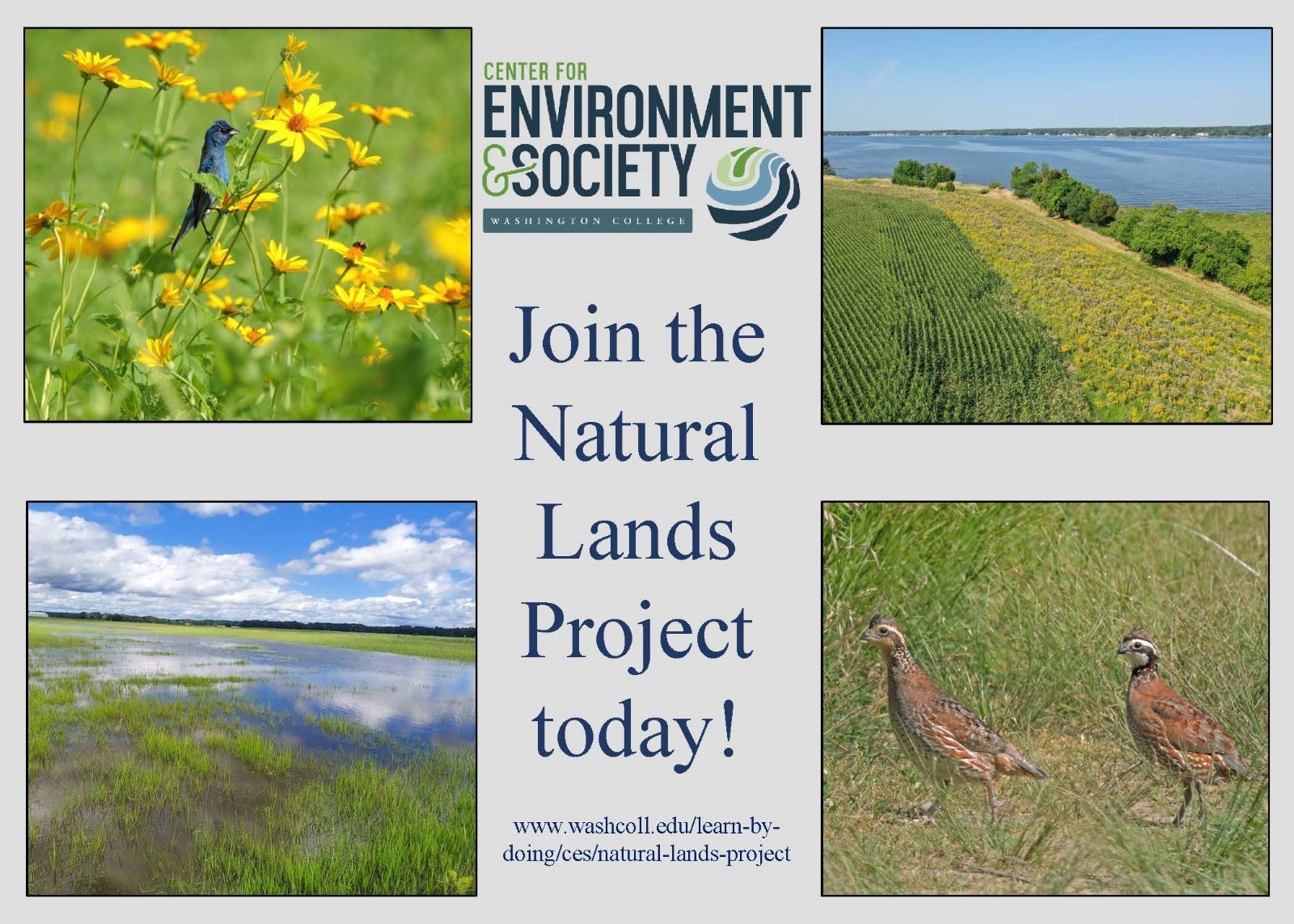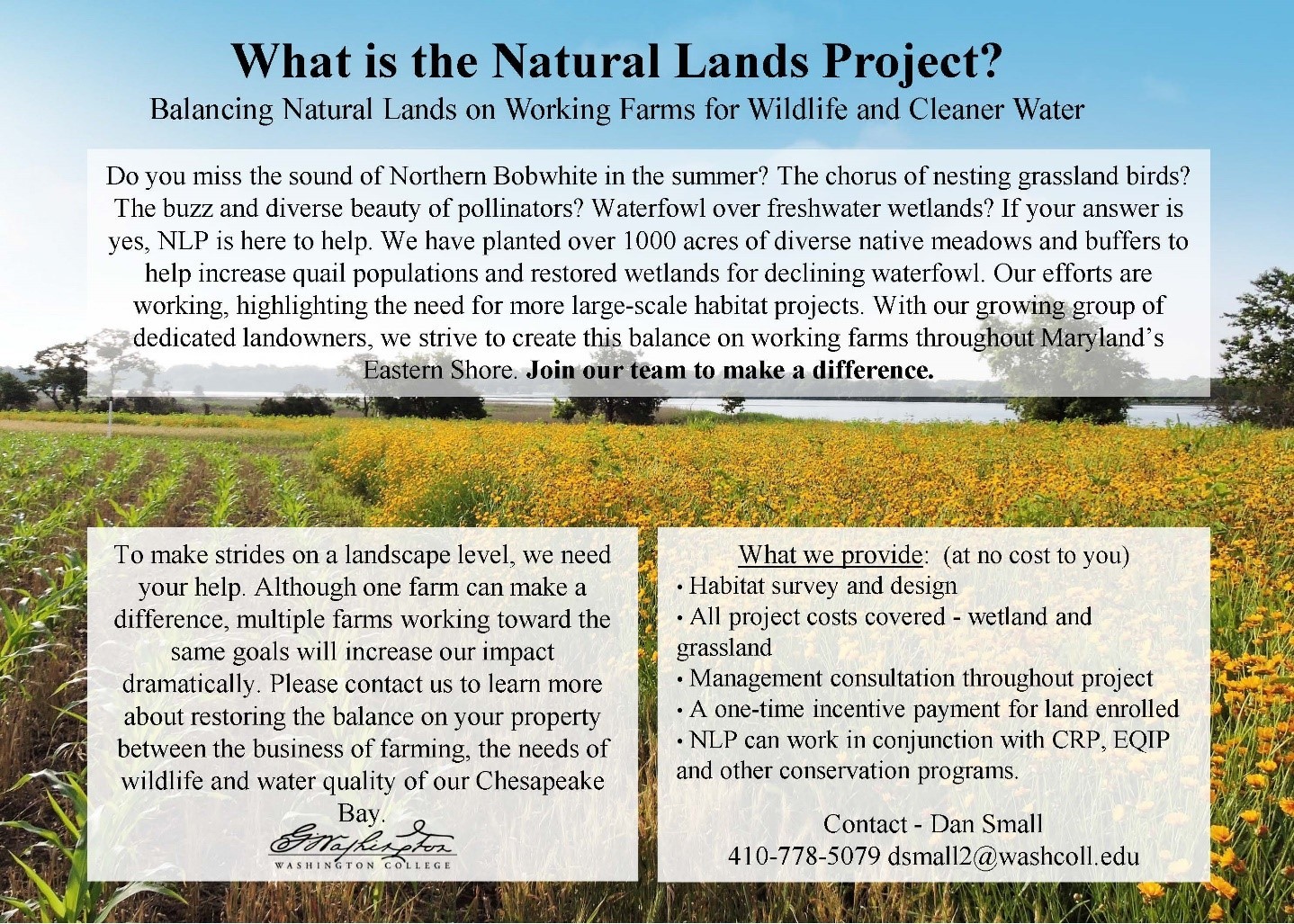Conservation Practices Virtual Education Series: Natural Lands Project
Natural Lands Project (NLP) was created in 2015 within Washington College’s Center for Environment and Society (CES), after several decades of successful management of early successional habitat that primarily promotes the assistance of recovering Northern Bobwhite quail populations and other grassland species of birds that are in decline due to habitat change and loss.
Through CES’s extensive management experience of early successional habitat on Washington College’s River and Field Campus (RAFC), formerly Chino Farms, the largest population of quail on the Eastern Shore have been established within the grasslands of RAFC. The mission of Natural Lands Project aims to take the successful management practices of RAFC and apply them to other landowners who are interested in the same mission – restoring a disappearing landscape that supports the Bobwhite quail population, and who are interested in pursuing the intersection of profitable agriculture and wildlife habitat integrity.

A conserved agricultural property in Kent County, MD with 35 acres of grasslands implemented by Natural Lands Project. Photo by Michael Dunmyer, ESLC Stewardship Specialist.
Maryland Department of Natural Resource (DNR)’s grant program Chesapeake and Atlantic Coastal Bays Trust Fund provided the funding for NLP to establish in 2015. Since then, NLP has been able to restore over 1,000 acres of upland habitat, including early successional meadows, wildflowers, and grasses either in the form of buffers or meadows, 80 acres of wetlands, and 80 acres of forest plantings on the upper shore of Maryland on both public and private property. The best management practices applied not only benefit the Chesapeake Bay and its tributaries, but also provides crucial habitat for early successional species and waterfowl. The Eastern Shore is unique to the Natural Lands Project in being able to use Bobwhite as a motivator, compared to the rest of the state. The Eastern Shore of Maryland has been a designated focal area for quail restoration from the NRCS and USDA, resulting in elevated funding opportunities on the Shore.
Landowners interested in NLP might be assessed for other applicable programs that could potentially be combined with NLP funds, such as NRCS programs (CRP, CREP, EQIP), or even coupled with funds available through ShoreRivers. Several different funding sources can come together to be able to put together a project, if finances are of concern to a landowner interested in implementing habitat.
Farmland that has been currently cropped or recently cropped (for example, recent fallow) can be enrolled in the Natural Lands Project. Ideally, larger acreages of 20+ acres are ideal in order to create meadows or buffers for early successional species. On top of this, working across neighboring or contiguous properties provides additional benefit, as this creates the necessary cores and corridors that quail prefer for their large home range. One property could contribute 50 acres, or five smaller properties could each contribute 10 acres, for example, to provide the most benefit to the mission of the Natural Lands Project. Pollinators are an additional benefit – for this reason, lots of wildflower species are planted within the meadows. Though pollinator meadows do not need to be large to provide benefit, NLP avoids planting smaller acreages (1, 2, and 5 acres, for example) since these smaller blocks do not provide the necessary habitat for the early successional species.
Ideally, NLP enrolls marginal cropland into this program so as to not have a large economic impact on the property. In some instances, the economic condition can improve through the establishment of a recurring rental rate if the land is enrolled in a program through NRCS.

The implementation of grasslands or early successional habitat does not take too long – in fact, almost immediate results are seen from nesting birds and pollinators utilizing the flowers and grasses that emerge during the first growing season. This does depend on soil type and external conditions as well – sandy soils could take longer to support growth than other soil types, and weather can impact growth as well.
In terms of management, at the minimum mowing the fields once a year, typically sometime between March 15th and April 15th, is required. In the 3rd or 4th year of establishment, some woody trees might emerge which would need some additional management, as well as ongoing management of noxious weeds that emerge during any season of growth. NLP offers to be there every step of the way, from initial implementation to later management consultation. With landowner permission, NLP will visit the properties a couple of times each growing season and once over the winter to offer management advice and to check on the condition of the habitat.
The goals and outcomes of enrolling land in NLP depend on the interests of the landowner; incentives can add up to be very financially beneficial to the property, which could be a large motivator. However, landowners often resonate with the mission of bringing back Northern Bobwhite and making a difference for the wildlife in their area and supporting pollinator initiatives.

In considering potential drawbacks, one must consider primarily the management requirements and responsibilities of implementing grasslands, as well as any potential economic implications. Most landowners that are farming themselves or renting to farmers are familiar with land management, and in this vein, having to consider management requirements is similar.
The only way to have quail on the Eastern Shore is to make a dedicated effort and provide the necessary habitat for them. Modern farming techniques have changed, urbanization has increased, and landscapes are changing: all of which have resulted in declining quail populations. Enrolling in Natural Lands Project does not automatically guarantee quail will be present, but without a change, there is no chance. Implementing grasslands, of course, not only benefits quail, but the plethora of other species that are dependent on early successional habitat that also face species decline. NLP has seen success on many of their project sites, with quail once again re-emerging after many years of absence. Implementing habitat that supports them is hope in making a difference in their population numbers. The Natural Lands Project is a bridge between the community and Washington College, with the Center for Environment and Society acting as a liaison. In order to make a difference, NLP works in the community to help wildlife and to help the Chesapeake Bay, and using RAFC as a model enables this intersection.
For more information on the Natural Lands Project and the services they provide, please visit their website here or contact Dan Small at dsmall2@washcoll.edu.






